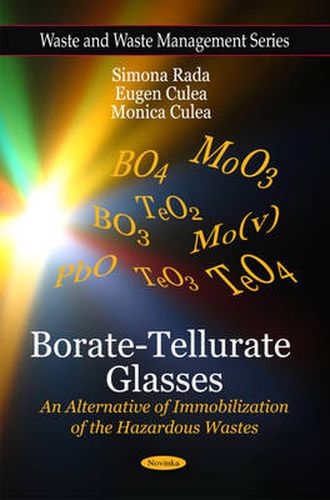Readings Newsletter
Become a Readings Member to make your shopping experience even easier.
Sign in or sign up for free!
You’re not far away from qualifying for FREE standard shipping within Australia
You’ve qualified for FREE standard shipping within Australia
The cart is loading…






Immobilisation of high level toxic wastes by vitrification is a well established process that has been studied extensively over last 40 years. A suitable glass host is used to dissolve the high level nuclear waste to form a glassy (vitreous) homogeneous product that can be cast into suitable forms, including large glass blocks. The main advantages of the vitrification route include the fact glass is a good solvent for waste, glasses can be processed at reasonably low temperatures, glass is very tolerant of variations in waste composition, glass exhibits reasonable chemical durability, glass is radiation resistant and can accommodate changes occurring during decay of high level nuclear waste constituents. This book analyses the immobilisation of high level toxic wastes through the use of an appropriate glass host.
$9.00 standard shipping within Australia
FREE standard shipping within Australia for orders over $100.00
Express & International shipping calculated at checkout
Immobilisation of high level toxic wastes by vitrification is a well established process that has been studied extensively over last 40 years. A suitable glass host is used to dissolve the high level nuclear waste to form a glassy (vitreous) homogeneous product that can be cast into suitable forms, including large glass blocks. The main advantages of the vitrification route include the fact glass is a good solvent for waste, glasses can be processed at reasonably low temperatures, glass is very tolerant of variations in waste composition, glass exhibits reasonable chemical durability, glass is radiation resistant and can accommodate changes occurring during decay of high level nuclear waste constituents. This book analyses the immobilisation of high level toxic wastes through the use of an appropriate glass host.